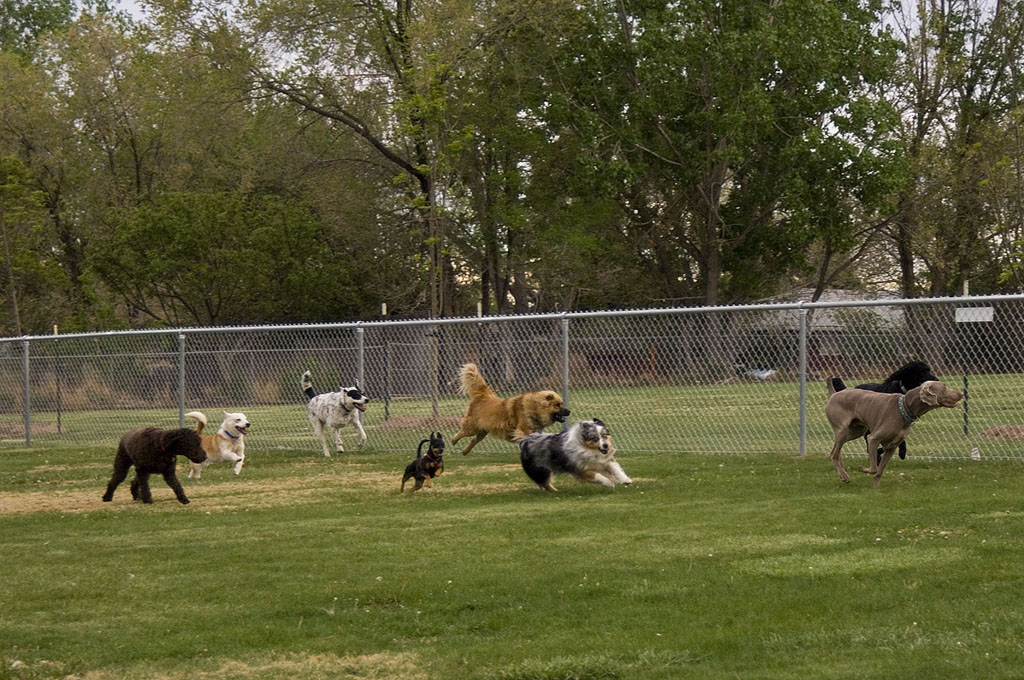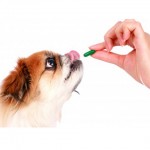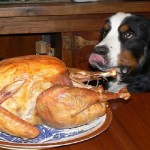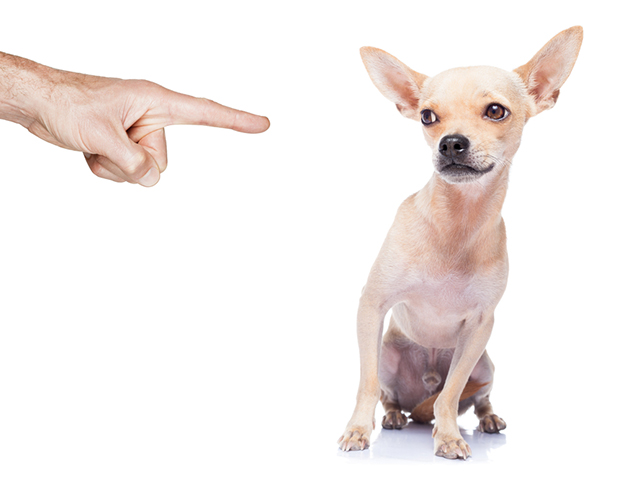By: Jaymi Heimbuch at Mother Nature Network
http://www.mnn.com
Dog parks are supposed to be fun — but often they’re not. Here’s what dog owners can do to fix that problem.
Dog parks. They’re a play heaven for our furry friends, right? Well, not really. Dog parks are one of those places that seem like a brilliant idea — and would be, if we all knew how to behave. But we don’t.
As many a trainer has told me, you can potentially ruin your dog by taking her to dog parks. A single situation gone wrong can escalate into an attack or fight, which can cause life-long reactivity or fear aggression in your dog. I’ve even talked to people whose dogs have had serious injuries (and one lost a leg) because what seemed like play escalated into an attack — something that probably could have been avoided if everyone involved had been reading the body language of the dog and paying attention to some simple rules of behavior. The bummer reality is that dog parks are not the playground most people think they are. But they can be. Here are the most common things people do wrong (so you can avoid these mistakes), and five ways you can make dog parks a safe and fun environment for all involved.
First, let’s look at what many dog owners do wrong. (And when you’ve read these, be sure to read on for 10 more things humans shouldn’t do at the dog park, plus 5 things that will help your outing go more smoothly!)
1. Not picking up after a dog.
Let’s start with something simple like sanitation. First, it’s simply good manners to scoop up after your dog does her business. It’s gross to walk into a park that has poo everywhere and worse, it’s really bad for your dog. There are a lot of diseases and parasites living in dog waste that other dogs can contract when they touch, roll in, or eat it. Unpleasant on all counts. So let’s avoid the spread of disease and follow this simple rule of etiquette. You also earn bonus points for bringing extra poop bags for other owners.
2. Not exercising a dog before taking her into a park.
This might sound counter intuitive. I mean, we go to dog parks to exercise our dogs, right? Wrong. Dog parks are a supplement to a dog’s daily activity, not the soul source of exercise or socialization. A dog that has been inside or alone for hours has pent-up energy, and bringing her into an extremely stimulating environment such as a park with other dogs is like holding a match really close to a stick of dynamite and hoping the fuse doesn’t catch fire. Your dog might mean well but be overly exuberant with a dog that doesn’t appreciate it (resulting in a fight). Or, your dog might mean well but be so excited about running around that other dogs start to chase her and she suddenly turns into the prey object for other dogs (resulting in a fight). See where I’m going with this? Well-behaved dogs are exercised dogs. So get those zoomies out of your dog before you bring her into a park situation.
3. Bringing dogs with rude greeting skills.
We’ve all experienced it: meeting a person who stands way too close when we don’t even know them. Meeting someone who is really loud and tells obnoxious jokes within the first 30 seconds of an introduction. Meeting someone who shakes your hand for too long until it’s kind of creepy and awkward. We glare at them, chalk them up to being rude, and count the seconds until we can escape.
It’s like this for dogs too. Introductions are important and make a difference in how dogs will get along. Allowing your dog to go charging up to a dog that has just entered the park is rude. The new dog is possibly on edge, examining its environment and level of safety, so your dog running full speed to that new dog could be asking for an instant fight. Allowing your dog to mount another dog in a dominance display is also rude. Allowing your dog to continue sniffing another dog that is clearly uncomfortable with being sniffed is, again, rude. It’s up to us humans to help dogs make polite introductions to each other. Knowing what’s polite in the dog world and what isn’t, and knowing how to help your dog be a polite pooch is essential to having positive experiences at a dog park.
4. Leaving prong collars and harnesses on dogs while playing.
Though it may seem logical to leave a prong collar, choke chain, gentle leader or harness on a dog — after all, that’s where you attach the leash, right? — it’s a bad idea. The neck and shoulders are where most dogs aim their nips and nibbles during play. Having metal contraptions where another dog is roughly shoving its mouth is inviting broken teeth, broken jaws, broken paws and legs, and potentially a huge dog fight if another panicked dog can’t detach itself from your dog’s neck. Never leave on special training devices while in dog parks. A simple nylon or leather collar that can be quickly removed is safe. (I’d add never use prong collars or choke chains in the first place but, that’s another article.)
5. Keeping dogs on leashes inside an off-leash area.
First, dogs on any sort of leash in an off-leash dog park is a bad idea. New owners often feel more secure keeping their dog on a leash, thinking that it’ll be easier to control a dog whose quirks and reactions they haven’t quite learned yet. However, a dog on leash is essentially a tripping hazard, especially if the leashed dog begins to play. A firm tug on a wrapped up lead could mean, if not a broken leg, a panicked dog whose first experience of a dog park is one of fear and anxiety. In addition, dogs on leash can feel more insecure because they know they can’t escape if they need to, so they can actually trigger fights that might not otherwise have happened. Second, people who use retractable leashes in dog parks are really asking for it. If extended, other dogs running loose can run straight into that thin cord and get injured. Or the dog attached might decide to take off after another dog, thinking she has all the freedom in the world, until she hits the end of the cord and is snapped back by the neck. Retractable leads are a terrible idea in the first place, but in a dog park they’re downright dangerous.
6. Bringing a female in heat or pregnant female.
I don’t think I need to go into detail on this one. It happens — even though it never, ever should. If you want to see all hell break loose among a group of dogs, then watch when a dog in heat is brought into the mix.
7. Bringing puppies less than 12 weeks old or dogs with incomplete vaccinations.
There are so many diseases and parasites in a dog park to begin with — it just makes you shudder. Older puppies and adult dogs who have been immunized can mostly handle the grossness, and will maybe only pick up Giardia or worms which, as an adult with a strong immune system, they can easily survive with treatment. However for puppies that haven’t completed their vaccinations, not only are they liable to pick up anything from parvo to distemper, they could pick up something like Giardia or worms that their tiny bodies have a hard time handling. Puppies under 12 weeks or that haven’t been fully immunized against common diseases need to be kept well away from dog parks.
8. Small dogs in same play area as large dogs.
Some dog parks don’t have separate play areas, and if that’s the case where you are, be careful about bringing your small dog to such a park. Small dogs can often be viewed as prey by large dogs. It is not unreasonable for a Rottweiler to look at a Yorkshire terrier like it’s a squirrel. The squeaking barks and speedy movements of a panicked small dog can also be enough to switch on the prey drive in a large dog and disaster happens. I’ve watched it happen on multiple occasions — it never ends well, and it sometimes ends with serious damage done to the small dog, and with the large dog being called “vicious” for simply being a normal dog that was overly stimulated. If you bring a small dog to a park where large dogs are playing, it’s on you if something happens to that tiny pooch. Is it worth the risk? Probably not.
9. Picking up and carrying a small dog.
This brings us to another common mistake owners of small dogs make. It is extremely understandable to want to pick up your small dog if a situation starts to escalate. It’s so innate in us, it’s nearly impossible to fight that instinct. We pick stuff up to protect it. But from a dog’s point of view, when things go upwards quickly it’s because that thing is fleeing, which means “chase!” The act of small dogs being lifted up triggers a treeing instinct in many dogs, moving them right into prey drive and exciting them into jumping on you to get at the small dog. In a dog park, where all dogs are extra stimulated and excited, picking up a small, panicked dog could be enough to get you knocked over or possibly even bitten.
10. Bringing in a dog that lacks recall skills.
Recall is about more than having your dog come when called. It’s also about having a dog that is constantly attuned to you and ready to obey no matter what, even in the midst of a game of chase. Recall is about being able to disengage your dog from an activity that is escalating and having her return to you until tempers calm down. Recall skills are important not just for your dog’s safety, but for the safety of every dog she is interacting with. No recall skills, no dog park.
11. Allowing dogs to bully other dogs.
You might think it’s cute when your dog is bouncing all over another dog, but it’s not. Learn when play gestures are cute and engaging — and socially appropriate to dogs — and when they’re just flat out obnoxious and rude. A play bow from a little distance away is cute. A tag-and-run request for play is cute. But constantly nipping at another dog’s neck and pouncing him to try to get a game of wrestle going is obnoxious. Especially when the dog on the receiving end isn’t comfortable with it. If your dog is getting too rough or rude with a dog that is not liking it, it’s time to call your dog over and have her leave that dog alone. If you don’t, you’re asking for a fight between the dogs, or getting yelled at by the owner of the poor dog being bullied.
12. Letting the dogs ‘work it out.’
Yeah, that just doesn’t work. So many people at dog parks think that if they leave the dogs alone, they’ll get through whatever social drama is happening. Dogs can be good at working things out, but dogs meeting for the first time in a stimulating environment are not on the best path to being able to work out differences. If a dog is being picked on, or there are signs of dislike between two dogs, it’s up to the humans to intervene and keep everyone mellow and happy. A perfect example of this is when a dog tries to mount another dog in a dominance display and it is passed off as “they’re figuring out the chain of command.” Nope, that dog is just being plain old rude — by both human and dog standards. If your dog needs to mount other dogs to figure out where he sits on the totem pole, then dog parks are not the best place for your dog and some training is in order. If there’s another dog at the park doing this to your dog, separate the dogs and leave the park. Being around a dog like that is not worth the potential trouble. Being around owners who think dogs should be left alone to “work it out” is also not worth it.
13. Bringing dogs that have resource-guarding problems.
Dogs who don’t like to share toys, or who like to steal toys and hoard them, are not going to have fun in a dog park. Not only that, but that kind of dog is also a potential danger to other dogs that want to play with toys and don’t take her cues to back off. This goes beyond toys, too. Dog treats are common in dog parks and a resource-guarding dog who picks up the scent will guard that food resource against other dogs with varying levels of aggressiveness (even if the treats are still in the human’s pocket!) Some dogs take resource guarding to a new level by guarding the dog they’re playing with, or even their own human. If your dog has any issues with resource guarding, the dog park is not a safe place to play.
14. Chatting with other humans rather than supervising the dogs.
A person’s number one priority at a dog park is a dog, not conversation with other humans. Think of it like taking children to a playground, putting them on the jungle gym with other kids, and then turning your back on them to chat with other parents. That’s frowned upon, right? You have no idea if arguing is breaking out, if someone is throwing sand, or if a kid is about to take a 10-foot plunge from the monkey bars. Same with dogs. Too many people feel they can let loose their dog in a fenced park and then just have a nice chat with other dog owners. But if you’re busy chatting, you’re not watching. Dog parks are for dogs; coffee shops are for chit chat.
15. Spending more time looking at a smartphone screen than at the dogs.
In the same way that chatting with other humans should not take priority over supervising dogs, a smartphone should not become a distraction either. Sadly, I’ve seen people enter the dog park and stare at their phones the whole time while their dog is wreaking havoc in the park or, even more sad, the dog just stands there staring at the cellphone-absorbed human, wondering if they’re ever going to play. Dogs know when you’re mentally disengaged and they can often take advantage of that — breaking rules because they know they can. Don’t make other dog owners have to manage your dog for you because you’re texting or tweeting or posting a picture of your cute dog to Instagram. Think of it like texting and driving: it can wait.











